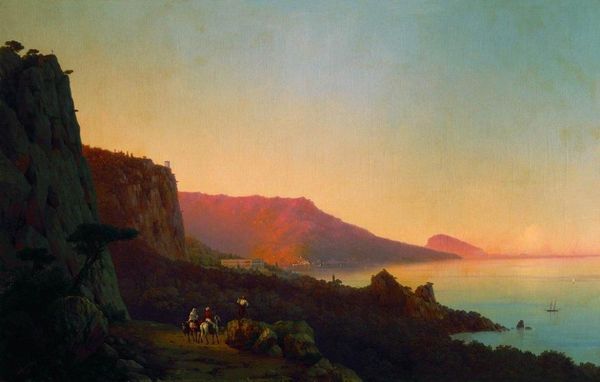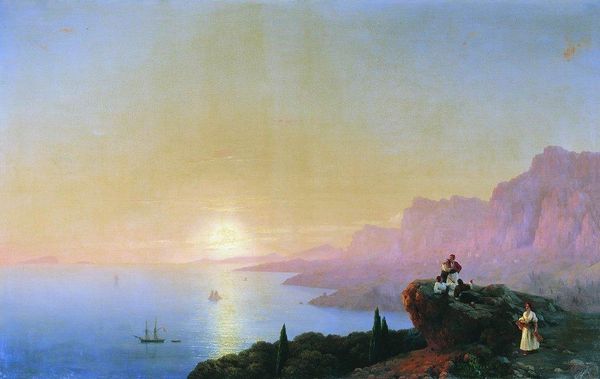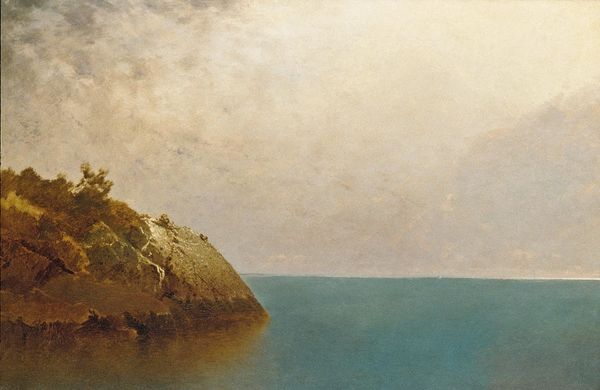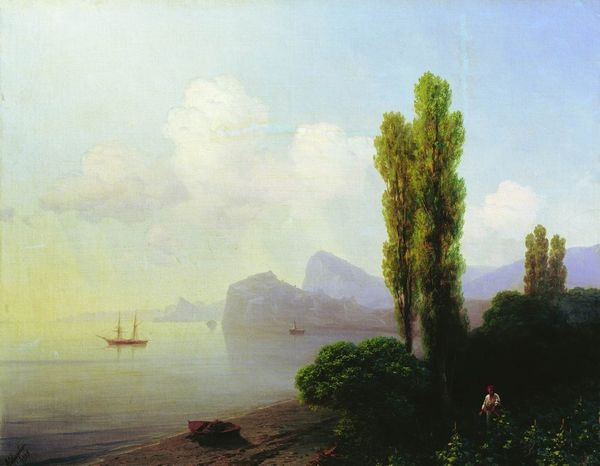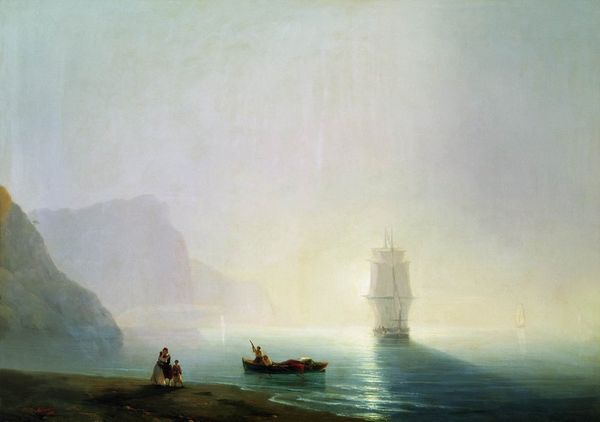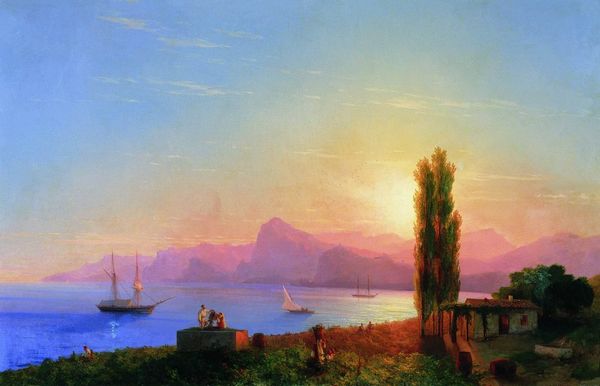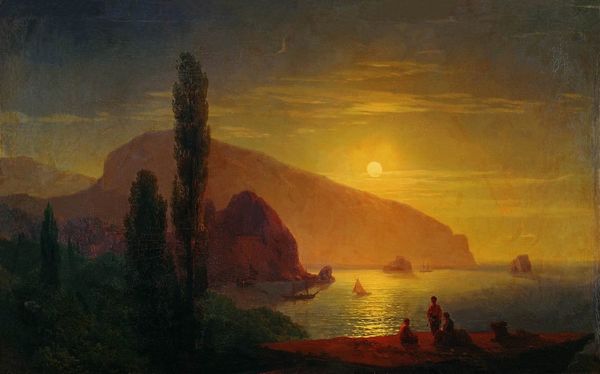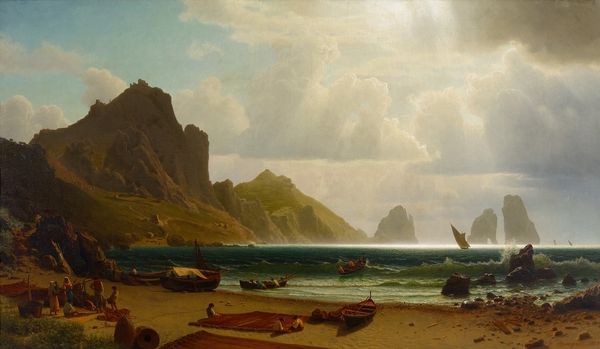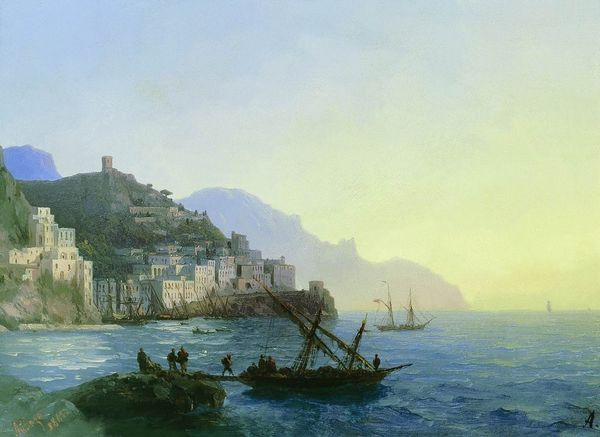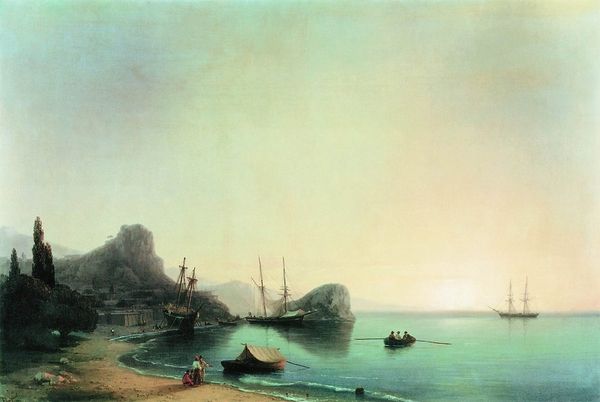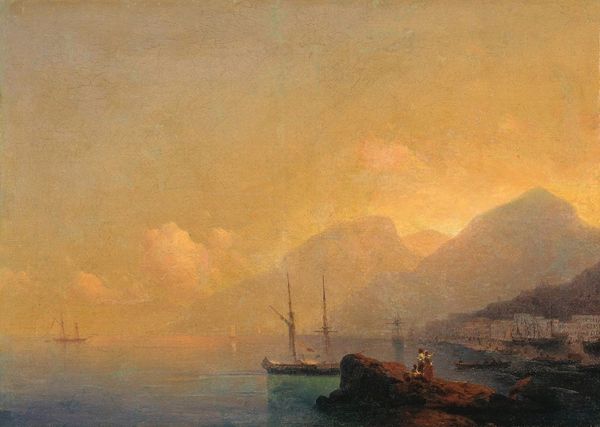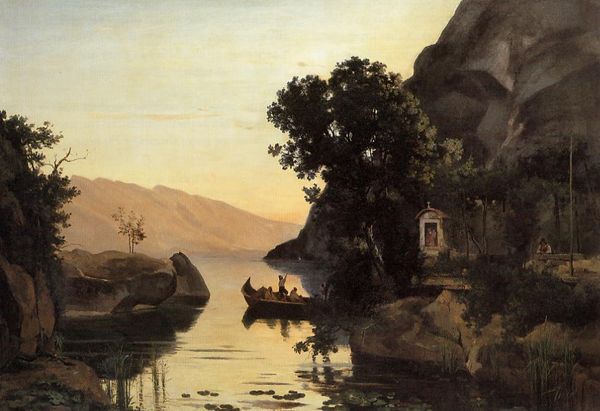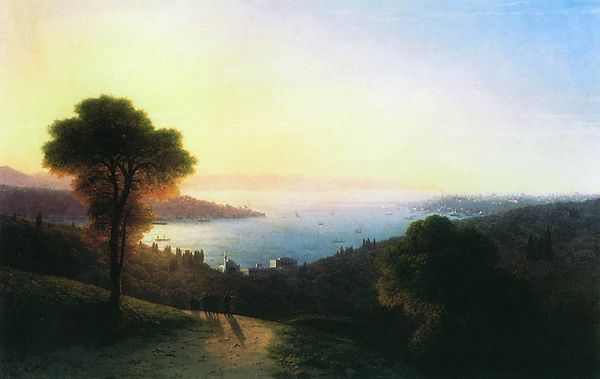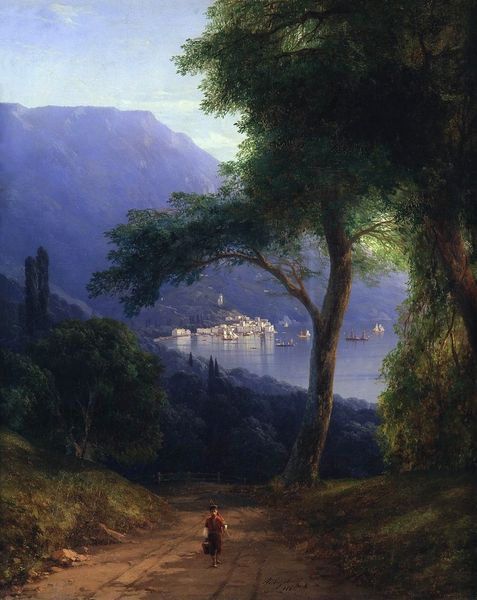
painting, oil-paint
#
boat
#
sky
#
cliff
#
ship
#
painting
#
oil-paint
#
landscape
#
impressionist landscape
#
oil painting
#
ocean
#
romanticism
#
mountain
#
cityscape
#
history-painting
#
sea
Dimensions: 71 x 105 cm
Copyright: Public domain
Editor: Here we have "The Coast at Amalfi," an oil painting by Ivan Aivazovsky, created in 1841. I am struck by how the almost idealized, picturesque qualities create a scene that feels both inviting and distant. What aspects of the artwork stand out to you? Curator: This work exemplifies how Aivazovsky and, more broadly, Romantic painters, shaped public perceptions of specific locations. Think about the social and political context: Why Amalfi? Italy was seen as the cradle of Western civilization and was strategically important due to Mediterranean trade routes. How do you think Aivazovsky’s representation contributes to or challenges the prevailing perceptions of Italy in Russia? Editor: I guess it makes sense to select a beautiful location, to sell this vision of a historically rich and beautiful area. It definitely presents a romanticized view, omitting the grittier aspects of reality, which in turn shaped how the Russian public imagined Amalfi. So is the painting meant to be a true depiction of the landscape? Curator: Not necessarily a true depiction in the documentary sense, but perhaps a true representation of an idea or feeling associated with a specific geographic location. Think about the politics of landscape painting at this time. This idealized representation serves as cultural diplomacy. What does it tell you about how art was employed to construct international relationships and influence cultural exchange during the 19th century? Editor: Wow, I had not considered its use as diplomacy. Now, the detail given to the light reflecting on the water seems really significant. It must carry a message, too. Curator: Absolutely! Consider how the artist uses light and shadow. Could it evoke particular feelings or ideologies? I mean, it projects a feeling of awe and almost a sense of divine power. Editor: Looking at it this way, I have to admit the landscape genre appears to serve a larger socio-political goal! It feels less passive than I initially believed. Thanks! Curator: Precisely. It highlights the vital role that landscape art played in forming cultural connections.
Comments
No comments
Be the first to comment and join the conversation on the ultimate creative platform.
